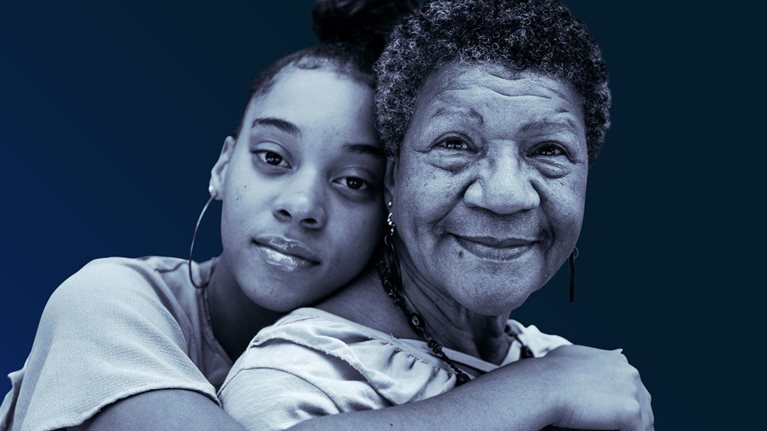The philanthropic response to the COVID-19 pandemic has shown the sector at its best. From the launch of community-based rapid-response funds to the development of diagnostics and vaccines, philanthropy is showing up both to help flatten the curve in the short term and to address the inequities the crisis will exacerbate over the long term.
What’s striking is not only the scale of capital being committed by major philanthropists (at least $10.3 billion globally in May 2020, according to Candid, which is tracking major grants) but also how it is being given: at record speed, with fewer conditions, and in greater collaboration with others. According to the Council on Foundations, almost 750 foundations have signed a public pledge to streamline grant-making processes, and individual donors are partnering with their peers to make sizable grants with less paperwork.
Confronted with the global pandemic, individual and institutional philanthropy has been responsive, engaged, and nimble. The challenge—and opportunity—for the sector will be to make those features stick. The gravitational pull toward old ways of working will be strong, especially as philanthropies grapple with the impact of an economic downturn on their own endowments. But many of the practices that have emerged during this pandemic, including the five that we highlight in this article, should be expanded and formalized as the world heads into the long process of recovery (exhibit).

Reduce the burden for grantees
Over the past 20 years, the philanthropic sector has adopted a more data-driven and rigorous approach. While those developments have strengthened the field in many ways, they have made the process of seeking and managing grants more cumbersome, especially for small, community-based organizations. The COVID-19 pandemic has accelerated moves to reduce those hurdles, prompting many foundations to relax grant requirements, speed up decision making, and give recipients additional flexibility in how they use funds.
What would it take to simplify further the processes for grant approval and reporting? Looking to college admissions for inspiration, imagine a common application for grant seekers, similar to the Common App platform that enables students to apply to many colleges using a single application. There could be a central clearinghouse with data-collection tools that nonprofits could use to share information with any donor, thus eliminating the burden of bespoke application forms and different data-reporting requirements. The platform could also store each organizations’ grant-approval history, as well the reviews of those grants. It could even spur donors to adopt a shared calendar of application and decision deadlines, allowing nonprofits to plan their annual budgets. If such a platform could trim just 15 percent off the cost of raising money from foundations, US nonprofits could save at least $4 billion a year.1
The barrier to such innovation is not cost but collective will. Some efforts are already underway—for instance, the JustFund web platform allows grassroots organizations to connect with small foundations and giving circles through a common proposal. But the real transformation can occur only if leading foundations collectively adopt a single platform. The pandemic offers proof that philanthropies are willing to bypass their unique vetting processes in the interest of speed and impact. As the crisis abates, donors should question whether their processes produce enough impact to justify their costs—and whether it might be time for a sector-wide effort to ease nonprofits’ administrative burdens.
Accelerate the pace and volume of giving
The COVID-19 pandemic has prompted a number of donors to dig deeper into their endowments and change their grant-making approaches to deploy more capital than they had planned. Some have doubled or quadrupled their payout rates, others will distribute 20 percent of their total assets this year, and others have committed as much as $1 billion to COVID-19 relief.2 All are recognizing that this historic pandemic demands an extraordinary response.
If ever there was a time for foundations to consider permanently accelerating the pace and volume of giving, it’s now. At present, US foundation assets total almost $1.1 trillion, according to Candid, while another more than $120 billion sits in donor-advised funds (DAFs). Foundations typically pay out around 5 percent of those assets each year to meet the federally mandated minimum, and DAFs have no such payout requirement, prompting many to demand faster distribution of dollars that have already produced tax benefits for their donors.
In 2002, our colleagues Paul Jansen and David Katz argued in McKinsey Quarterly that donors should assess the time value of philanthropy in the same way an investor does: putting more value on a dollar deployed today than one spent in the future. The conclusion was that delaying grant making in favor of capital accumulation often exacts a significant cost. While an increasing number of philanthropists have since committed to giving away the majority of their wealth in their lifetimes instead of conserving their assets to exist in perpetuity, the average annual spend down of foundation endowments has barely budged.
As we enter the long recovery effort, boards and leadership teams, as well as individual philanthropists, should have explicit discussions about the rationales for their giving horizons. Does perpetuity help achieve your social-impact objectives, or is it serving another objective, such as family unity or founder legacy? If family connection is the primary goal, is setting up a permanent foundation the best way to achieve it? What do you believe your giving will be able to do better 50 or 100 years from now? If you have already received the tax benefit for your giving, why not disburse more of the funds sooner?
With approximately 112,000 foundations in the United States alone, a one-size-fits-all answer to these questions is neither appropriate nor desirable. But for philanthropists tackling issues that are compounding and getting harder to solve with every passing day—among them, racial inequity, weak public health and education systems, and the climate crisis—accelerating spending may make sense.
Partner with other donors to go further faster
Private investors typically look to investment managers who have specific expertise and a successful track record; private-equity investors frequently deploy their capital alongside others they trust, following others’ due-diligence efforts rather than conducting their own. Yet when it comes to philanthropic giving, many individual donors—and institutional foundations—often go it alone. They build sizable teams that develop expertise, create new initiatives, and deploy grants largely in isolation from other donors.
The pandemic response has demanded a different approach, bringing donors together at the local, state, national, and global levels to pool resources, align on priorities, and deploy funds rapidly through collaborative funding platforms. For instance, seven foundations partnered to create the Families and Workers Fund, providing flexible funding to organizations working to prevent people from falling deeper into poverty because of the effects of COVID-19. Similarly, the COVID-19 Therapeutics Accelerator was formed to develop treatment options, anchored by $125 million in funding from the Bill & Melinda Gates Foundation, Wellcome Trust, and Mastercard. It was quickly supported with follow-on funding from others.
While donor collaboratives existed well before the COVID-19 pandemic, they were more the exception than the rule. Going forward, what if each foundation and donor aimed to allocate at least 25 percent of their funding to support initiatives led by other donors? Building nimble, impact-oriented governance models is no small feat when there are multiple donors with their own strategies involved. Yet such partnerships are highly effective when they rally donors around concrete and measurable goals—and when they collaborate to scale, share expertise, and combine diverse networks.
Invest more in local communities
Philanthropists are often drawn to global problems, leading them to invest in the well-being and empowerment of people living thousands of miles away. While these contributions are critical to address global inequities and injustices, the pandemic has rightly turned many philanthropists’ attention to the severe inequities in their own backyards, producing a swell of local giving. According to Candid, almost 600 state and local community-focused COVID-19 funds have cropped up around the United States, attracting contributions from private foundations, corporations, and individual donors alike.
While such local giving has often been deprioritized by philanthropists focused on national or global issues, the current crisis is a reminder that we each depend on—and have an obligation to support—the strength and resilience of our local community. All philanthropists should consider increasing the percentage of their giving that is truly local, looking beyond organizations that primarily serve elite interests. Donors should look to local organizations that support communities of color and those that are led by people of color, particularly women. Structural racism has left these organizations chronically underfunded, yet they are often doing the most vital work to strengthen local communities and reduce inequality.
Upending power dynamics and empowering grassroots leaders will require many foundations and donors to shift their mindsets and build new capabilities. Local giving is an opportunity for philanthropists to test and learn from a range of community-led and participatory grant-making models, which they can then apply in their work across their countries or around the world.
Support the public sector
While philanthropists have responded to the COVID-19 pandemic with record levels of support, the massive responsibility for leading the response and recovery falls primarily on the shoulders of the public sector. Philanthropists have rightly coordinated with city and state governments during this crisis—for example, in the Chicago Community COVID-19 Response Fund launched by the Chicago Community Trust, the United Way of Metro Chicago, and the City of Chicago.
While a handful of foundations collaborate with government at the state and local levels and an increasing number seek to influence government policies by supporting advocacy, the vast majority of foundations have steered clear of investing in public-sector capacity building. This is a significant missed opportunity. Given the vast scale of government (which dwarfs the nonprofit and philanthropic sectors), the use of philanthropic dollars to improve the efficacy of government is a potential high-return investment.
There are several ways that private philanthropy can help make government more effective. First is to double down on its role of providing risk capital to support innovative programs. Now is the time to collaborate with public-sector partners to plan, test, and validate new approaches, which agencies can then adopt if proven effective.
Second is to support cross-agency efforts that address underlying problems. Government agencies tend to focus on delivering against their particular mandates (for instance, financing affordable housing and policing). They find it challenging to address root causes across departments (for instance, getting the homeless into permanent supportive housing instead of police placing them in temporary shelters).
Third is to address talent and personnel constraints. That can take a few forms: training government employees and leaders who are in critical positions, helping governments identify and attract top talent, and supporting the creation or expansion of positions that fill specific skill gaps (for instance, data analytics and supply-chain management).
In addition to supporting government agencies’ effectiveness, perhaps philanthropy’s most crucial role is to support the public-policy ideation that is necessary for the recovery stage of the COVID-19 pandemic. This is a historic moment to make major changes to our economic and social orders; private philanthropy can help drive the reimagination by funding the analysis, debate, and advocacy of new ideas, with a particular focus on ensuring that vulnerable communities are not left behind. To help safeguard public-sector accountability and community involvement, donors can strengthen the ecosystem of the think tanks, advocacy organizations, movements, and media needed to ensure that the public policies that drive social and economic recovery are responsive to community needs.
Since the COVID-19 pandemic took hold in March 2020, donors and foundation teams have been working around the clock, drawing upon their missions and values to guide them through uncertainty. With this renewed sense of purpose comes an opportunity to reshape priorities and practices for the next era of giving. The pandemic has demonstrated that the sector can and will pivot quickly in a crisis. The challenge for leaders working in philanthropy is to expand and institutionalize the practices that emerged during the crisis for the work that lies ahead.


